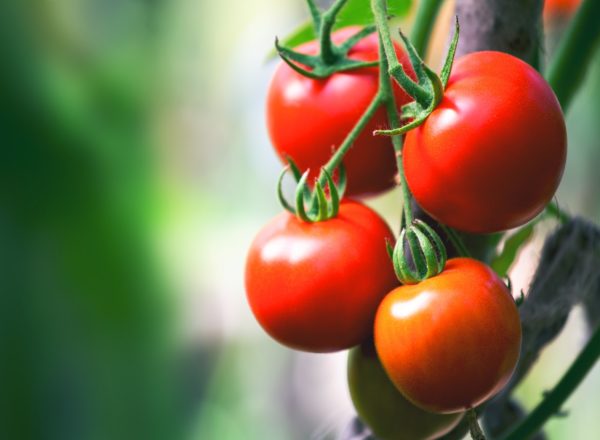
The tomato variety Cascade is fruitful, which is confirmed by the photos and reviews of summer residents, is undemanding to care and has many advantages. In appearance, tomato Cascade has a traditional tomato shape, the leaves are ordinary green. During flowering, flowers form, then ovaries.
Tomato Cascade refers to indeterminate, the fruits are medium in size. The photos and reviews of gardeners show that tomatoes have high productivity, sprout together and in one bush up to 20 or more ovaries are formed.
Content
Characteristics and description of tomato
Cascade tomato is a common mid-season vegetable that ripens in 110-115 days. The plant belongs to indeterminate, its growth can reach up to 1.5 m, so you should take care of the place for planting in advance and prepare the supports.
The tomato yield is high. With proper cultivation and compliance with basic rules for care, it is possible to get a good turnover of vegetables from 1 m2. On one bush, up to 25 fruits can form.
Cascade tomato fruits are bright red, smooth with juicy, fleshy flesh. The peel is of medium thickness, protects tomatoes from mechanical stress. Taste, sweetly expressed with a slight acidity. Therefore, the vegetable is used in the preparation of many dishes, including used for fresh consumption.
Due to the unpretentiousness and resistance of the plant to adverse conditions and diseases, tomatoes can be grown both outdoors and undercover. So that the tomato is not crowded, no more than 4 bushes should be placed on 1 m2.
Due to their unusual appearance and regular shape, tomatoes are also used to decorate the table, great for pickling and salads.
They don’t really need care, you just need to plant, water, weed and loosen the soil in a timely manner, then a rich crop of tomatoes of the Cascade variety is provided.
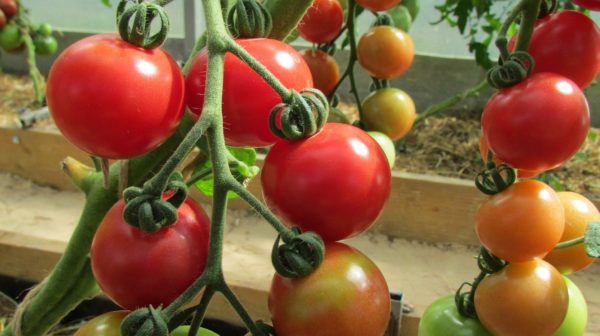
Yield tomato variety Cascade
Tomato Cascade is an excellent high-yielding mid-season variety. Full ripening occurs in 60-65 days from the moment of transplanting vegetable seedlings in open ground or in a greenhouse. On one bush, up to 20-24 fruits are formed, weighing about 60 grams. Therefore, from 1 m2 it is possible to get up to 3 kg and a little more with proper care and compliance with the rules of cultivation.
Advantages and disadvantages
The tomato variety Cascade is ubiquitous, due to its many advantages and the almost complete absence of disadvantages. Regardless of the high growth of the bush, if you correctly tie and mulch the seedlings, care is carried out without difficulty. But some summer residents attribute growth to minor vegetable flaws.
Among the advantages of a tomato are:
- High yield.
- Abundant fruit formation on one bush.
- Cascade tomatoes can be grown both in a greenhouse, in a greenhouse, and in open ground.
- The fruits have excellent taste, therefore, are widely used in the preparation of many dishes, for fresh consumption and for winter preparations.
- In cultivation and care, Cascade tomatoes are not particularly whimsical, it is enough to follow traditional care measures and a rich harvest is provided.
- The plant is characterized by some resistance to major diseases.
- Tomato fruits have an unusual, unique color, so they will look great in the form of a festive table decoration.
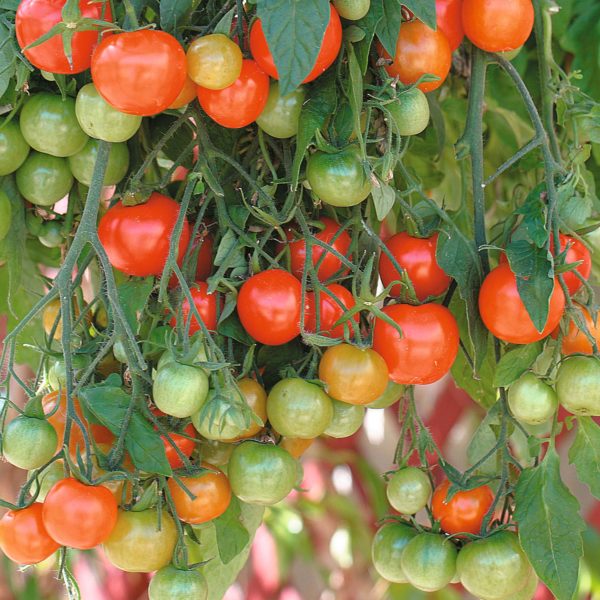
Growing rules
Growing Cascade tomatoes is not at all difficult, the main thing is to follow the traditional rules and a rich harvest of vegetables is provided. The most important thing in planting a tomato is the timely preparation of planting material, soil, proper sowing of seeds and transplanting seedlings to an open area on time.
Soil preparation
Soil selection in tomato cultivation is of utmost importance. It is believed that this vegetable is quite demanding on the soil, it should be light, breathable and fertile.
It is better to plant sandy loam soils for planting Cascade tomato. It is also important to pay attention to the acidity of the earth. They should not exceed 6.5.
Soil for tomatoes is prepared since autumn. At this time, make all the necessary fertilizers and carefully dig the soil for the winter. Among the top dressings, both mineral and organic fertilizers are used. This can be cow manure, chicken droppings, compost, you can also use wood ash, superphosphate and other components.
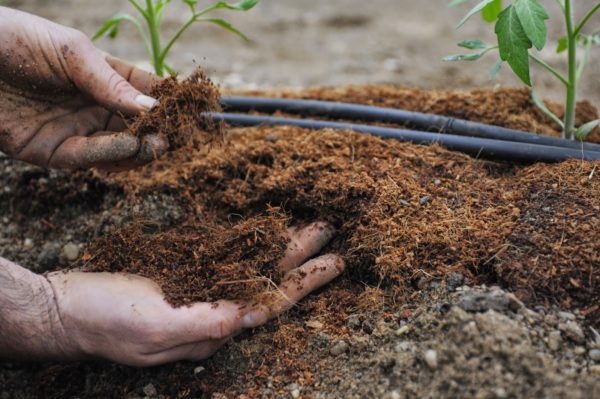
In the spring, when many vegetables are planted, the area for tomatoes should be re-excavated and, if necessary, again enrich the land with fertilizers. This will ensure the friendly growth and development of tomato, and exclude damage to plants by diseases.
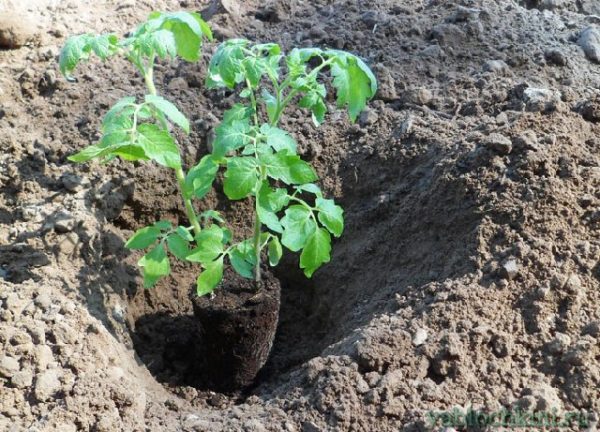
Sowing tomato seeds for seedlings
Tomato seeds should be planted approximately 60-65 days before the expected day of planting seedlings in open ground. For mid-season tomato varieties, sowing begins approximately in the beginning or in the middle of March in order to transplant seedlings in the first ten days of June.
Planting material before planting is processed and it is advisable to conduct a check to obtain maximum germination of plants.
The verification is carried out as follows:
- Pour water into a glass.
- Dip the seeds into it.
You can also soak the seeds in a weak solution of potassium permanganate to disinfect them and increase immunity to the black leg and other diseases.
Plant a tomato in pre-prepared containers with soil. The substrate can be prepared independently or purchased in a store.
In the prepared soil, small furrows are made and seeds are sparse into them. Pre-moisten the soil with water at room temperature. After planting, you can again not abundantly water the soil.
To sprouts quickly and amicably sprouted, containers can be wrapped with polyethylene to preserve heat, optimum humidity and temperature in them. With the advent of the first bores, the film is removed and begin to prepare seedlings for the street, gradually tempering it.
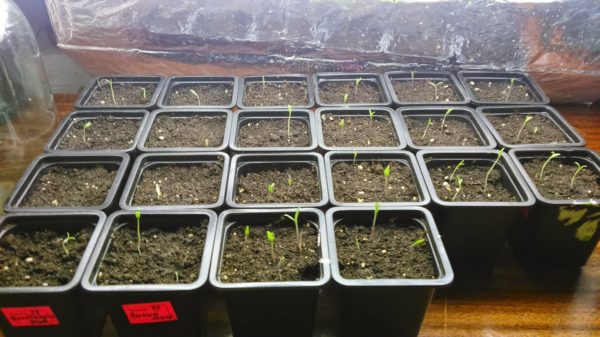
Transplanting seedlings into the ground
After the seedlings have grown enough, get stronger and get used to low temperatures, it can be transplanted into the open ground. It is believed that this procedure is done when at least 6 leaves are formed on the tomato bores.
Transplanting seedlings of tomato variety Cascade is carried out according to this scheme:
- Shallow holes are made along the perimeter of the site, observing a distance from each other of at least 30 cm, and between rows of 0.5 m.
- Wells moisten with water and immerse seedlings to almost half the length of the stem.
- Sprinkle the top of the hole with dry earth and water again.
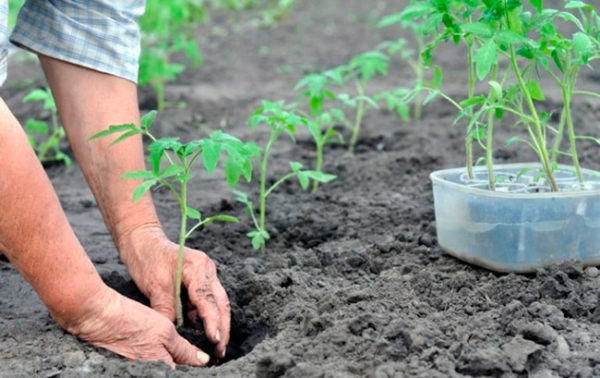
Tomato Care Technique Cascade
Leaving is an integral part of a rich harvest and Cascade tomatoes also need it. So that at the end of the summer there are a lot of fruits and the plants do not die from diseases and pests, it is necessary to weed the beds, loosen the soil, form bushes, properly water and fight diseases and pests.
Water the tomatoes as necessary at the rate of 1 liter per well. In rainy weather, moisture is excluded or trimmed, and in hot weather, on the contrary, it is increased. Abundant watering should be carried out during the flowering of bushes and the formation of fruits. Water for irrigation should be at room temperature, ice water should be excluded and plants should be watered only under the root system.
It is also necessary to feed tomatoes with organic and mineral fertilizers about 3 times during the whole summer. Magnesium, potassium, nitrogen and phosphorus compounds are an excellent option, in addition, you can use wood ash, superphosphate and diluted manure for watering.
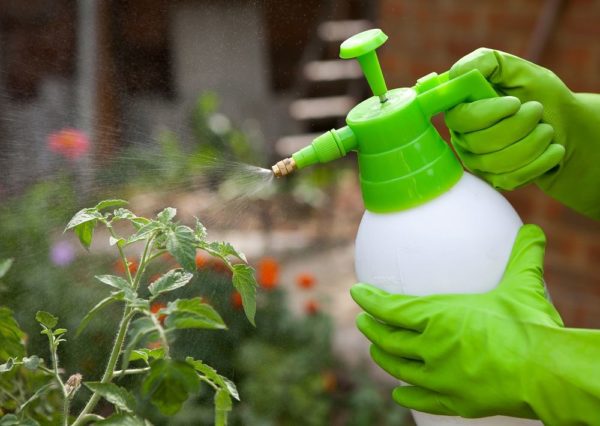
Diseases and Pests
Tomatoes, like other vegetables, are quite often exposed to various diseases and pests, therefore, they also need to be controlled and properly taken care of. Often, tomatoes are affected due to non-observance of simple rules of cultivation and care.
The Cascade tomato variety itself has significant resistance and immunity to major dangerous diseases. But if you violate the care technique, the plant can be affected by late blight, various forms of rot, black stalk, spotting, mosaic and other diseases. All of them adversely affect the growth and development of the bush, and interfere with the normal formation of fruits. Often, diseases completely lead to the death of plants.
Among the pests, which also negatively affect the development of vegetables, are more common bears, wireworms, aphids, less often slugs, ticks and other insects.
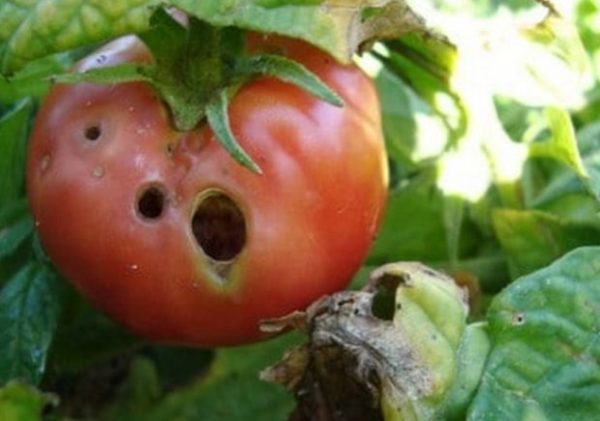
Reviews
Ekaterina, 37 years old:
“Cascade tomato variety is great for marinade, salads, good fresh. In the process of growth, the tomato did not find any flaws, were not affected by diseases, and are not particularly demanding for care. I liked the variety, I will plant more. ”
Vasilisa, 41 years old:
“I was advised by a friend of Cascade tomato. The first time I planted such a vegetable 2 years ago and still plant. The yield is good, the taste is excellent and can be grown both in the greenhouse and on the street. ”
George, 47 years old:
“My family loves tomatoes, especially in pickled form, so for a long time I was looking for a variety that has medium fruits and a pleasant taste. And then I found - this is a tomato of the Cascade variety. With minimal care and basic cultivation techniques, I got a rich harvest.I’m very pleased with the tomatoes, I haven’t found any flaws, next summer I will plant only this variety. ”




 Low-growing tomatoes, without pinching: 5 of the most delicious varieties
Low-growing tomatoes, without pinching: 5 of the most delicious varieties Why tomato seedlings grow poorly
Why tomato seedlings grow poorly We grow a tomato in a shell
We grow a tomato in a shell Growing tomatoes without watering according to the method of Kazarin
Growing tomatoes without watering according to the method of Kazarin